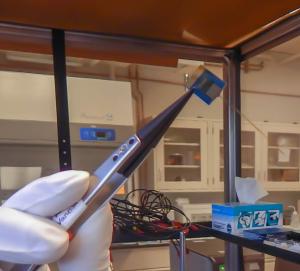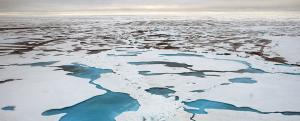LAB REPORT
Science and Technology Making Headlines
Dec. 7, 2018


Lawrence Livermore has been honored with a Glassdoor Employees’ Choice Award, recognizing it as one of the Best Places to Work in 2019, as well as the top government contractor and top lab.
The best lab to work
If you're looking for a new job, you might want to check out companies where employees are happier than the norm.
And Lawrence Livermore is in the top 25 of Glassdoor’s “Employees' Choice Awards for the Best Places to Work.”
The Employees’ Choice Awards program, now in its 11th year, is based solely on the input of employees, who elect to provide feedback on their jobs, work environments and companies on Glassdoor, one of the world’s largest job and recruiting sites.
LLNL ranks 24 out of 100 on Glassdoor’s “Best Places to Work U.S. — Large” list with an overall company rating of 4.4. In addition, LLNL is ranked the No. 1 government/government contractor employer and the No. 1 laboratory employer. LLNL also is No. 4 in the United States for large employers headquartered in San Francisco and No. 6 on the list of large employers in the Bay Area.

This LLNL flexible electrode array gets implanted into animals to record brain signals. Photo by Julie Russell/LLNL
Peering into brain cells
Scientists at Lawrence Livermore and UC San Francisco have developed an innovative tool to peer into the secret life of brain cells.
The new recording device has the potential to measure the electrical activity of more than 1,000 individual neurons in real time from 16 different locations in the rat brain, and it can remain in place for many months, producing the most comprehensive and longest-lasting recordings ever. The researchers hope to use the device to learn more about how memories form, and how past experiences influence decisions.
Scientists need to record the activity of individual neurons, which are smaller than the width of a human hair, but they also would like to know how widely separated brain regions interact. They must capture neural impulses that transpire over just a fraction of a second, but in order to track how the brain changes over time they have to record for days, weeks, or even months.
Most current recording devices are made out of wire or silicon, which are harder materials that can damage the soft tissue of the brain. The new technology, developed in collaboration with scientists at LLNL, uses a plastic-like material called polymer that is more malleable. The electrodes can move with the brain to remain in contact with the neurons they’re recording from without damaging the soft tissue. Thanks to this adaptation, the device can track the activity of individual neurons across many days and can continue to measure single-neuron activity for at least 11 months.


Asteroid Bennu has a 1 in 2,700-chance of striking Earth between 2175 and 2199.
Rendezvous with an asteroid
Asteroid Bennu is a 500 meter-wide monster that has a very small chance of becoming the rock that finally wipes humanity off the face of the planet. Earlier this week, NASA’ss OSIRIS-REx probe landed on the object and collected a sample to eventually bring to Earth.
Bennu may contain the building blocks of life, so recovering a sample will allow scientists to test a theory that asteroids carried vital chemicals to Earth, which sparked the genesis of living organisms. But there also is a chance it may hit Earth. If a disastrous impact came to pass, it would release more energy than all the nuclear weapons detonated in the entirety of human history.
Lawrence Livermore scientists who work alongside NASA as part of the planetary defense team “ultimately concluded that using a single HAMMER (Hypervelocity Asteroid Mitigation Mission for Emergency Response vehicle) spacecraft as a battering ram would prove inadequate for deflecting an object like Bennu.”
“The consequences would be dire,” said Kirsten Howley, a physicist at Lawrence Livermore National Laboratory who is part of the planetary defense team. “This study aims to help us shorten the response timeline when we do see a clear and present danger so we can have more options to deflect it. The ultimate goal is to be ready to protect life on Earth.”


LLNL has converted many of its cafeteria product food containers into recyclables.
Eco-friendly gets the green light
Two Department of Energy national laboratories including Lawrence Livermore have received USDA’s Excellence in BioPreferred Procurement Awards for testing and adopting biobased products within their operations.
The Excellence in BioPreferred Procurement Awards initiative recognizes outstanding achievements in advancing the objectives of the BioPreferred Federal Purchasing Preference Program.
LLNL's food services program converted all food service ware to biobased and compostable products, adopting biobased hot cups, cold cups, cutlery, lids, straws, takeout containers, napkins, soup cups, small sides/condiment containers and to-go bags. The use of biobased compostable products contributed to LLNL's sitewide collection of 68 metric tons of compostable waste in 2017 for reuse and recycling instead of being directed to a landfill. USDA’s BioPreferred Program, created by the Farm Security and Rural Investment Act of 2002, promotes U.S. economic development, creates new manufacturing jobs and provides new markets for farm commodities.

Arctic sea ice loss for the past 37 years is not tied to humans alone. About half of the melting is caused by natural climate fluctuations. Photo courtesy of Karen Frey/Clark University
Nature takes its course
Up to half of the observed decline in Arctic sea ice is likely the result of natural climate cycles, according to a new study out of the Lawrence Livermore National Laboratory.
The study found that “internal variability contributes to about 40 percent to 50 percent of the observed multi-decadal decline in Arctic sea ice” observed since the late 1970s, based on climate model simulations. Natural climate cycles, like El Ninos and La Ninas, can speed up or negate Arctic sea ice retreat driven by man-made global warming, the study found.
“Internal variability can enhance or mute changes in climate due to greenhouse gas emissions. In this case, internal variability has tended to enhance Arctic sea ice loss,” said co-author Stephen Po-Chedley, a climate scientist at LLNL.
Po-Chedley and his colleagues wanted to find out why Arctic sea ice decline has been larger than climate models predicted. Researchers hope their study can help climate models better predict changes in the Arctic in a warmer world.





